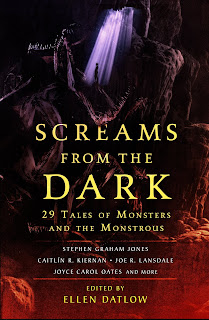The Smell of Waiting

Kaaron Warren, "The Smell of Waiting" in Screams From the Dark , ed. Ellen Datlow (Tor Publishing Group: 2022). This story has a different take on returning the dead to life. Life isn't something to be restored, but rather, death is a thing or a presence that can be taken away. Of course, once you've taken it away, you've got to store it somewhere! What did you think about the role that Andrea played in the process as opposed to the role that the dog played in the process?

























